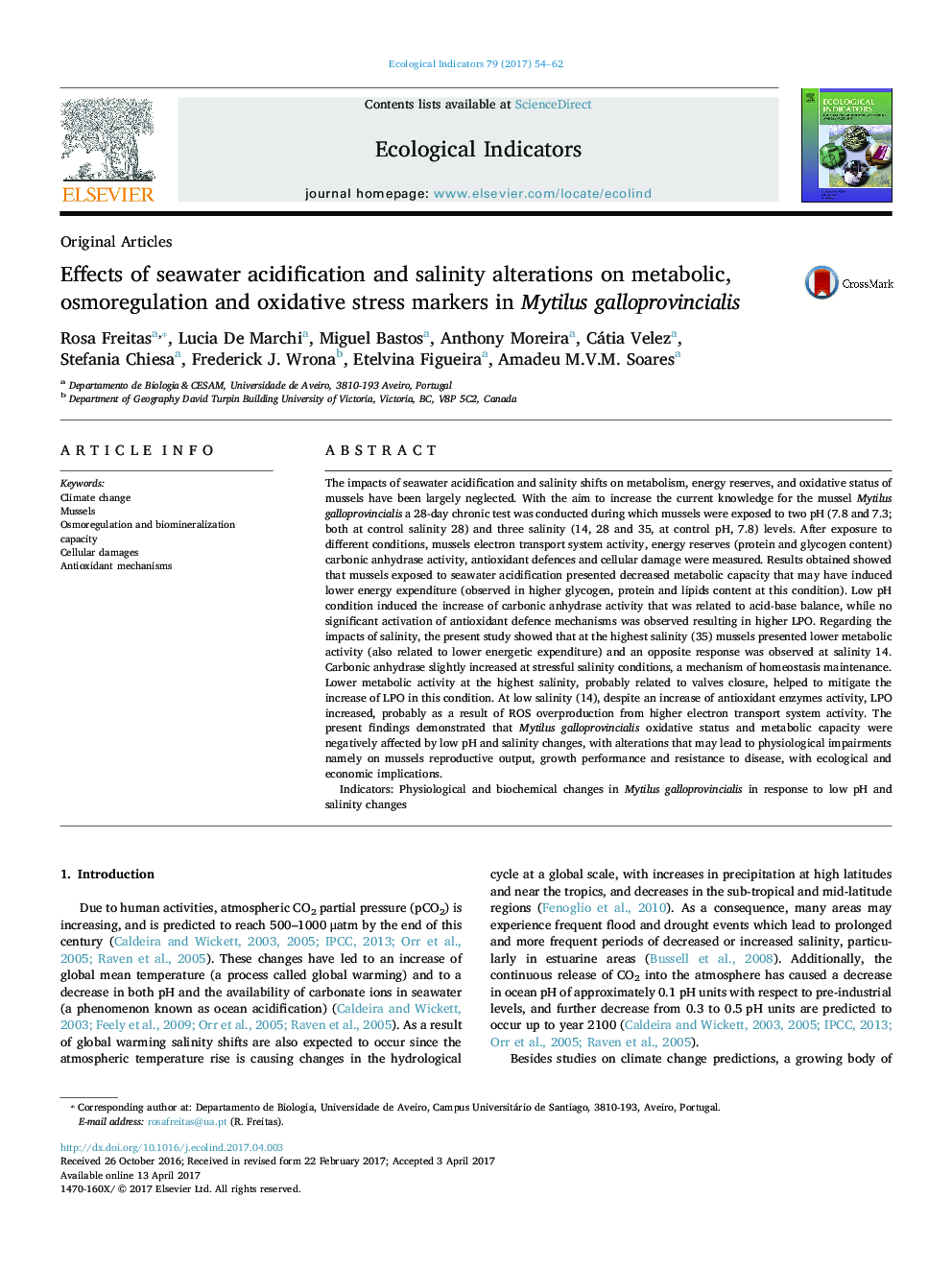| Article ID | Journal | Published Year | Pages | File Type |
|---|---|---|---|---|
| 5741752 | Ecological Indicators | 2017 | 9 Pages |
â¢Mytilus galloprovincialis reduced the metabolic capacity under acidified conditions.â¢At control pH, mussels showed lower metabolic capacity at the highest salinity (35).â¢Energy reserves were higher in mussels under low pH and salinity 35 (pH 7.8).â¢Carbonic anhydrase activity increased in mussels under acidified conditions.â¢Higher oxidative stress was observed in mussels exposed to salinity 35 and pH 7.3.
The impacts of seawater acidification and salinity shifts on metabolism, energy reserves, and oxidative status of mussels have been largely neglected. With the aim to increase the current knowledge for the mussel Mytilus galloprovincialis a 28-day chronic test was conducted during which mussels were exposed to two pH (7.8 and 7.3; both at control salinity 28) and three salinity (14, 28 and 35, at control pH, 7.8) levels. After exposure to different conditions, mussels electron transport system activity, energy reserves (protein and glycogen content) carbonic anhydrase activity, antioxidant defences and cellular damage were measured. Results obtained showed that mussels exposed to seawater acidification presented decreased metabolic capacity that may have induced lower energy expenditure (observed in higher glycogen, protein and lipids content at this condition). Low pH condition induced the increase of carbonic anhydrase activity that was related to acid-base balance, while no significant activation of antioxidant defence mechanisms was observed resulting in higher LPO. Regarding the impacts of salinity, the present study showed that at the highest salinity (35) mussels presented lower metabolic activity (also related to lower energetic expenditure) and an opposite response was observed at salinity 14. Carbonic anhydrase slightly increased at stressful salinity conditions, a mechanism of homeostasis maintenance. Lower metabolic activity at the highest salinity, probably related to valves closure, helped to mitigate the increase of LPO in this condition. At low salinity (14), despite an increase of antioxidant enzymes activity, LPO increased, probably as a result of ROS overproduction from higher electron transport system activity. The present findings demonstrated that Mytilus galloprovincialis oxidative status and metabolic capacity were negatively affected by low pH and salinity changes, with alterations that may lead to physiological impairments namely on mussels reproductive output, growth performance and resistance to disease, with ecological and economic implications.Indicators: Physiological and biochemical changes in Mytilus galloprovincialis in response to low pH and salinity changes
Graphical abstractDownload high-res image (128KB)Download full-size image
